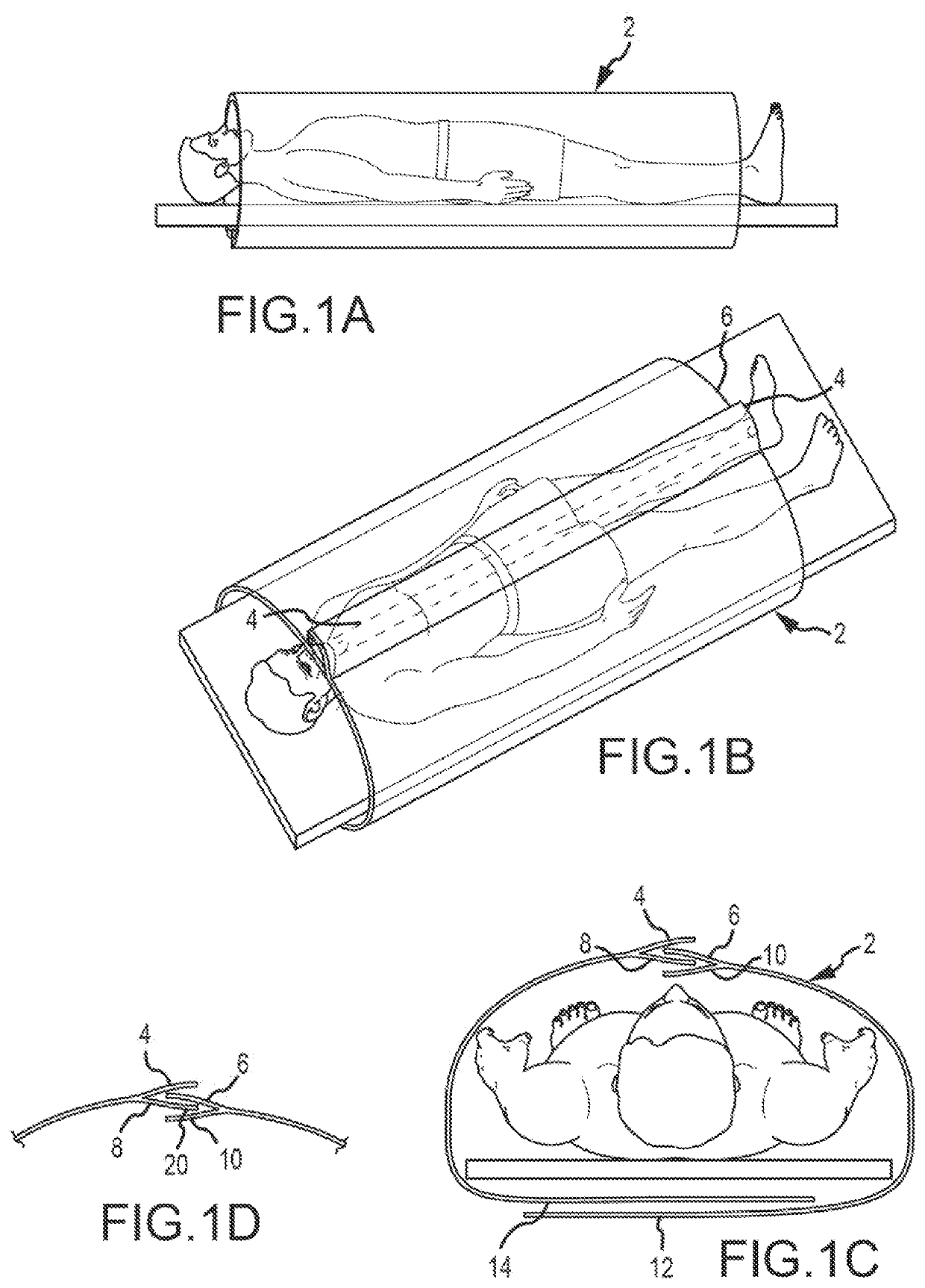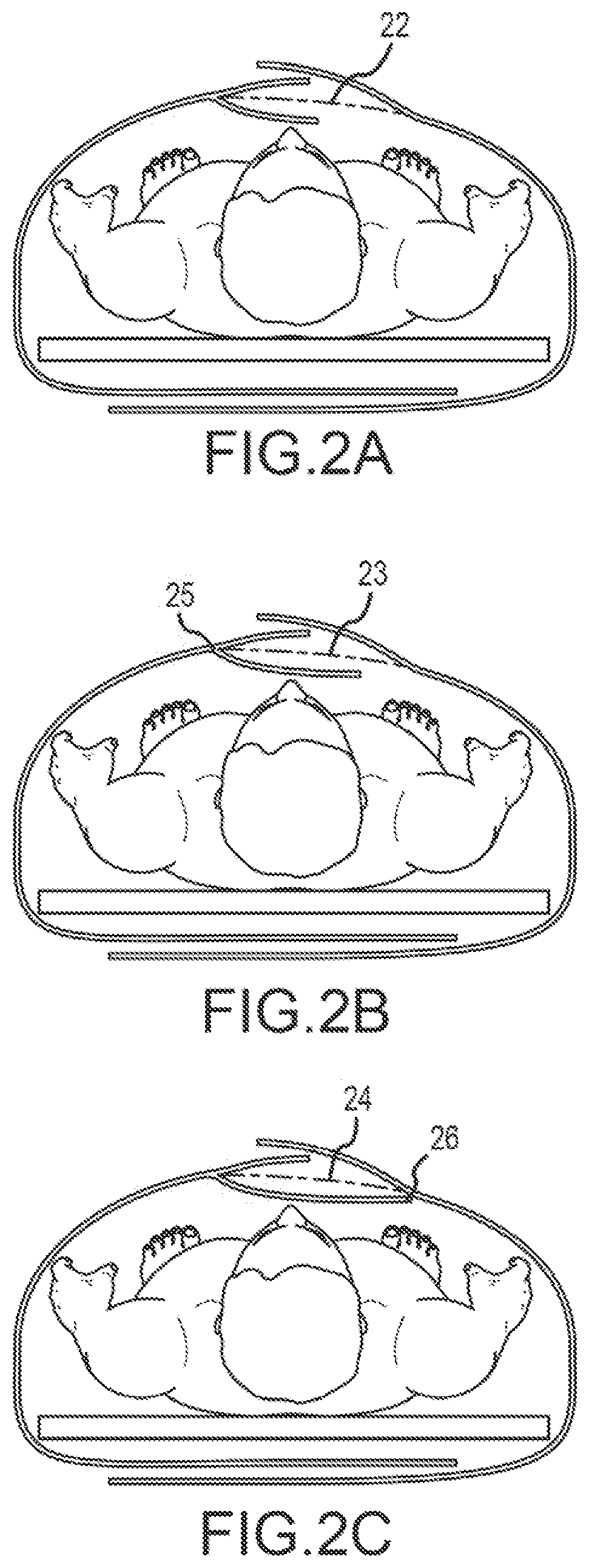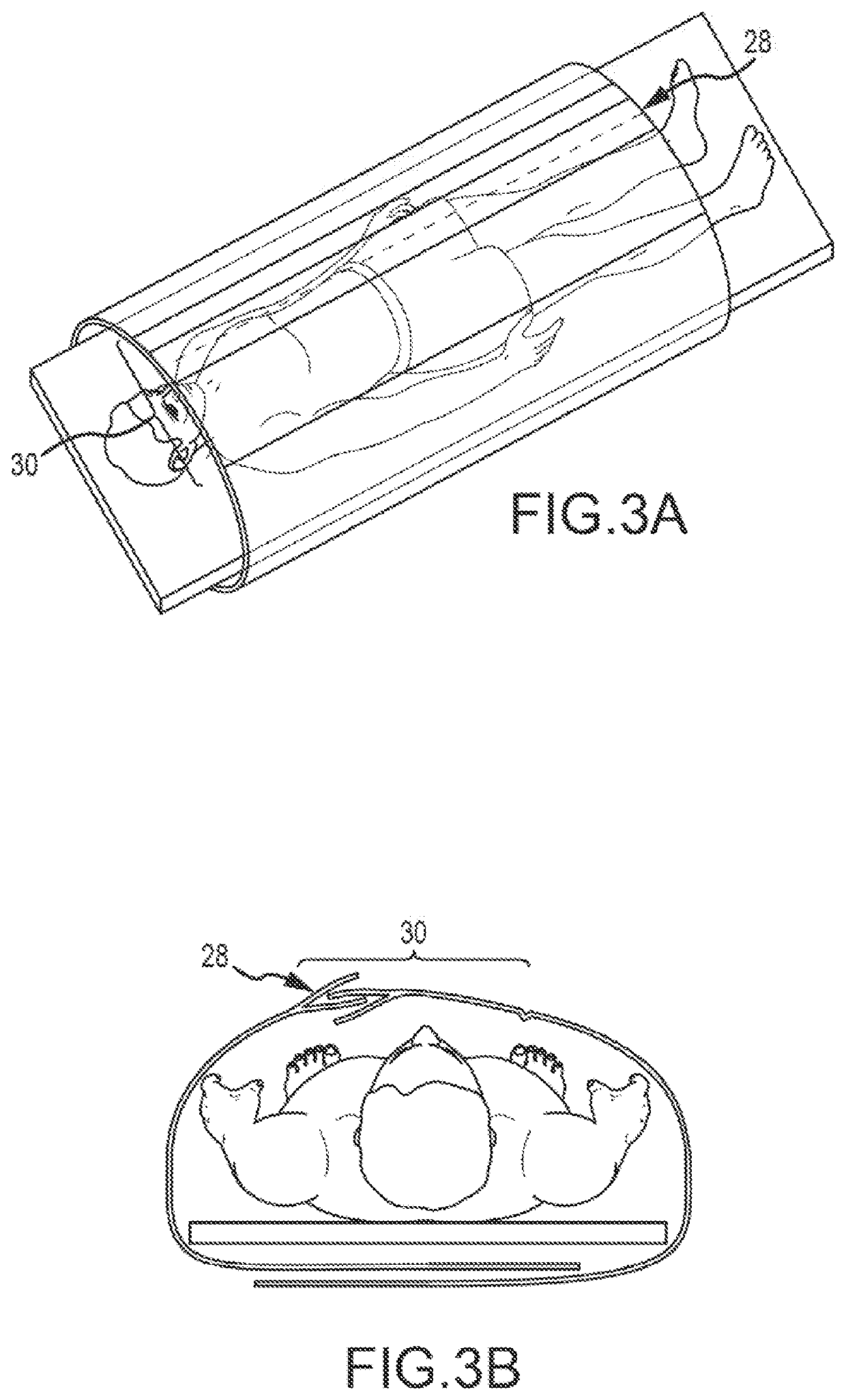First, current makeshift draping procedures (fitting a multitude of drapes around the patient) are
time consuming and thus prolong the length of the procedure.
Second, current methods of draping the various equipment and surgical implements are complicated and challenging to accomplish efficiently.
Third, maintaining a
sterile field throughout the procedure is more challenging, especially when using radiological equipment.
Finally, current draping systems do not provide a well-accepted means to provide temporary sterile coverage of underlying sterile equipment tables and trays.
Using 3D imaging by utilizing an “O-arm” device (with or without navigation technology) presents challenges both in regard to appropriate draping and maintenance of a
sterile field as well as maneuverability of the 3D imaging device in and out of the sterile field.
“C-arm” surgical cases can present similar challenges.
In regards to the above-referenced radiological equipment, to create a sterile “tunnel” with drapes through which the arm can pass (as it rises from the unsterile ‘below table’ region to the sterile ‘above table region’) is not only cumbersome and time-consuming, but also a
potential risk to the sterile field if such a method were to fail (e.g., an unsterile drape falls into the sterile field as the radiological device arm propels it superiorly).
Aside from the fact that they are time-intensive and cumbersome, these drapes can contaminate the field if they become displaced as the O-arm is enclosing around the OR table.
Thus, the surgeon is compromised as he / she attempts to perform the
surgery with the 3D device left in place.
However, the
reference frame cannot be exposed to the underside of the undraped (and thus non-sterile) 3D radiographic device above.
Numerous problems exist in regard to draping when attempting to use 3D devices and concomitantly maintain a sterile field.
First, any breach in the makeshift drape
system (e.g. gap, tear or opening) can potentially cause the drape to fail in its intended purpose—protecting the patient from infection by preventing microorganisms from making their way into the
skin opening of the
surgical site.
Thus, if the 3D radiographic device swings into position over any portion of the approximated half-sheets uncovered by the plastic cover, the medial borders are potentially exposed.
When the half-sheets fall laterally to the floor during the removal process, it is possible that
contamination of the underlying sterile field could occur as the medial edges of the half-sheets make contact.
Second, the time in gathering the components of such a makeshift draping
system (2 half-sheets, two non-piercing hemostats / clamps, steri-strips, and a
cut out plastic covering) and placing into position is labor and time-intensive.
Certainly, it can be expected that any relatively new scrub
technician will not have such components ready in an efficient manner.
In addition, a variety of apparatuses, devices, and machines utilized in
surgery cannot be brought into and / or placed over a sterile field without being properly covered or draped to prevent contaminants from falling or otherwise being transported into or onto the sterile field.
Covering or draping surgical apparatuses, devices, and machines is necessarily a meticulous, painstaking, and therefore time-consuming process, requiring careful attention to preservation of
sterility; by way of non-limiting example, draping a
surgical microscope generally takes five to ten minutes, and draping a da Vinci® surgical
system robot generally takes seven to fifteen minutes.
However, if
surgical equipment is covered or draped prior to the start of the procedure, it is likely that the drapes themselves will be contaminated before the draped device is used, thereby defeating the intended purpose of the drape, i.e. to protect the sterile field from
contamination being introduced via the device.
A significant body of evidence-based literature has recently indicated that this mode of
contamination presents a significant challenge to operating room personnel; indeed, AORN has recently revised its recommendations to indicate that back tables should, rather than may, be covered during times of increased activity or
delay.
Many surgical apparatuses, devices, and machines, including but not limited to surgical microscopes and da Vinci® surgical robots, are large and cumbersome, and therefore not easily moved or repositioned after a surgical procedure has begun.
Thus, another contamination risk of pre-draped
surgical equipment presents itself: operating room personnel may contaminate a drape that covers or drapes an apparatus, device, or
machine as they move around the operating room during the procedure but prior to use of the apparatus, device, or
machine.
If the surgical drape is contaminated by coming in contact with non-sterile operating room personnel during the surgical procedure, the drape must be removed and replaced during the procedure and before the apparatus, device, or machine intended to be covered or draped is use; this removes the attention of the operating room personnel from the surgical procedure itself, and increases the time, cost, and risk of the surgical procedure.
Thus, multiple problems exist in prior art draping apparatus and methods, and in particular providing a sterile field where a separation is necessary to accommodate one or more pieces of equipment used during the
surgery.
Because the use of makeshift draping is both time and labor intensive, does not adequately address the helpful ‘under the table’
enclosure, and fails to preserve sterile technique, many surgeons have opted to simply not drape the sterile fields as well as the 3D radiographic device.
 Login to View More
Login to View More  Login to View More
Login to View More 


